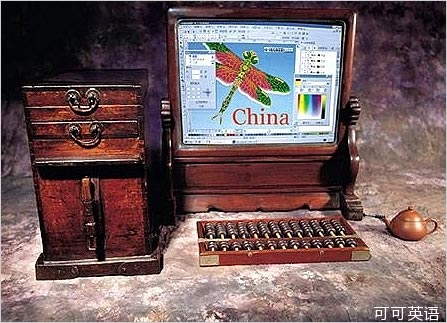
We have entered a new age of embedded, intuitive computing in which our homes, cars, stores, farms, and factories have the ability to think, sense, understand, and respond to our needs. It's not science fiction, but the dawn of a new era.
我们正在迈入可穿戴、直觉式计算的新时代。房屋、汽车、商店、农场、工厂,这些东西都将具备思考、感知和行动的能力。这不是科幻小说中的场景,而是我们即将进入的新时代。
Most people might not realize it yet, but we are already feeling the impact of what's known as the third wave of computing. In small but significant ways it is helping us live safer, healthier, and more secure lives. If you drive a 2014 Mercedes Benz, for example, an "intelligent" system endeavors to keep you from hitting a pedestrian. A farmer in Nigeria relies on weather sensors that communicate with his mobile device. Forgot your medication? A new pill bottle from AdhereTech reminds you via text or automated phone messages that it's time to take a pill.
大多数人可能还没有意识到,我们已经感受到第三次计算机革命的影响。它正在细微、然而却显著地帮助我们过上更安全、更健康、更稳定的生活。比如说,假如你驾驶一辆2014款梅赛德斯-奔驰车,它的“智能”系统将防止你撞到行人。尼日利亚的农民用上了可以与个人的移动设备进行信息传递的气象传感器。而AdhereTech推出的新款药瓶则能通过短信或自动电话留言的方式,提醒用户按时服药。
Technology is being integrated into our natural behaviors, with real-time data connecting our physical and digital worlds. With this dramatic shift in our relationship to technology, companies can adapt their products and services.
科技正融入我们的一言一行,实时数据正将我们的现实世界和数字世界联系在一起。我们与技术的关系发生了巨大的改变,企业可以据此调整自己的产品和服务。
We already see cities growing "smarter" by installing sensors to automate the management of parking spaces. To enhance urban security, acoustic sensors coupled with audio and GPS analytics "listen" to pinpoint the location of gunfire. Within 30 seconds, dispatchers can determine the number of shooters, the shots fired, and even the type of weapon used.
我们看到:通过安装传感器,智能城市的管理者们可以更好地规划停车位。而声音传感器是市政安全领域的好手,它们可以通过声音和GPS精确定位枪声的位置。只需不到半分钟,安全调度员们就能获知开枪者的人数和枪击次数,甚至是枪的型号。
Consider health care. Wearable devices allow us to monitor our steps, our sleep patterns, and our calorie intake to ensure we are following doctors' orders and meeting our personal goals. Parents of newborns can try a diaper that has a humidity sensor that tweets when it's time for a change.
再来看看健康领域。我们能从可穿戴设备上监控自己的运动、睡眠和卡路里消耗等信息,从而确保自己没有违背医生的指示,或是正在努力实现个人健康目标。父母们则可以给新生儿穿上带有湿度传感器的尿布,它能在需要更换时发出声响提醒我们。
To understand how revolutionary the third wave is, we ought to consider how far we have come. The first wave began when companies started to manage their operations via mainframe computer systems over 50 years ago. Then computing got "personal" in the 1980s and '90s with the introduction of the PC. For the most part, computing remained immobile and lacked contextual awareness.
第三次计算机革命的意义究竟如何?我们不妨回过头来看看历史。第一次是50年前,大型机系统进入公司管理运营领域。上世纪80年代和90年代,随着PC机诞生,计算机进入“个人”时代。但总体而言,“计算”缺乏移动性,而且不那么智能。
In computing's second wave, mobile computing and the smartphone took center stage. Billions of people, some who might not have had access to clean water, electricity, or even housing, were connected. Developers created apps and provided consumers with access to just about everything through their phone at the cost of a monthly data plan.
第二次计算机革命后期,移动计算和智能手机开始占据主导。全球几十亿人口都通过网络彼此相连,其中很多人甚至还没解决饮用水、电力和住房的问题。软件工程师们开发了无数应用程序,人们几乎可以用手机完成任何事情,需要做的仅仅是支付一下手机上网套餐而已。
As the third wave gains momentum, designers must meet the demands of clients who want to experiment with new tech.
随着第三次计算机革命的突飞猛进,设计师们必须满足消费者不断尝试新技术的需求。
Historically, designers have focused their attention on a product's form and function. While that still matters, of course, the definition of a meaningful user experience has expanded significantly and will continue to do so. Instead of creating a single product, designers will need to imagine a suite of connected products and services that have awareness of each other and their surroundings.
在此之前,设计师们的重心是产品的外形和功能。当然,这些现在仍是不可或缺的要素,但用户体验的重要性日益凸现,并将在未来起到决定性的作用。打造单一产品的时代已经过去,设计师们需要构造出一整套互相关联的产品和服务,还要让它们能够相互感知、相互配合。
Stake a claim now, we tell companies, in the space where digital and physical disappear, and products and services mimic and react to our natural behaviors.
我们告诉企业,现在就要跑马圈地,占领这个消弥了数字世界与现实世界界限的空间。在这个空间里,产品和服务模拟我们的自然行为并对其做出反应。


